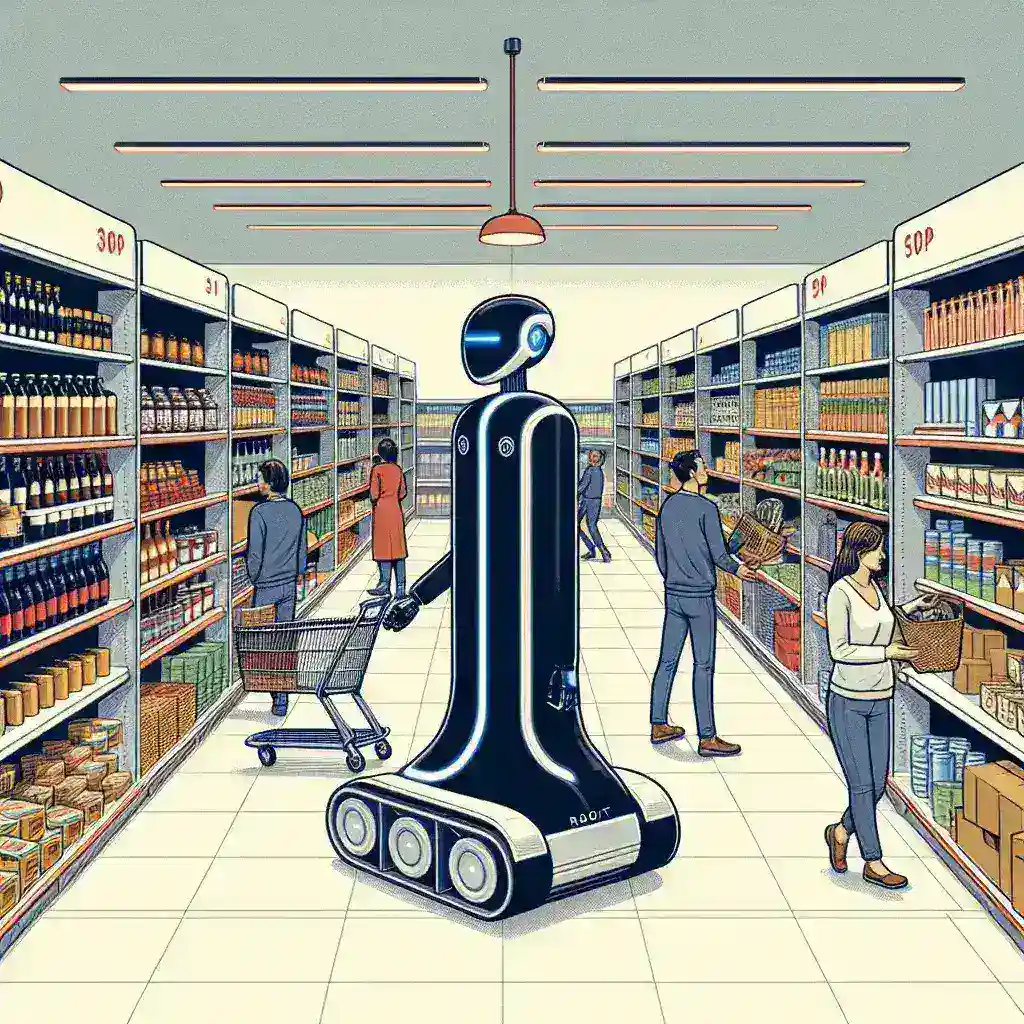Introduction
In an era where technology and retail converge, Target is leading the charge by piloting innovative robotic restocking systems in select stores across the Midwest. This initiative is not merely about keeping shelves stocked; it’s a strategic move to enhance operational efficiency while prioritizing customer satisfaction. As the retail landscape evolves, understanding the implications and benefits of such technology becomes crucial for both retailers and consumers alike.
The Evolution of Retail Technology
Historically, inventory management has been a cumbersome process, often involving manual stock checks and replenishment. However, with advancements in technology, we have witnessed a significant shift. From barcode scanning to automated inventory systems, each step has aimed at reducing human error and increasing efficiency.
Understanding Robotic Restocking
Robotic restocking systems represent the latest innovation in this ongoing evolution. These systems utilize autonomous robots equipped with sensors and artificial intelligence to navigate store aisles, identify low-stock items, and assist in replenishing shelves. This technology not only streamlines restocking but also frees up employees to focus on customer service and other essential tasks.
Target’s Pilot Program
In its latest initiative, Target has launched a pilot program in several Midwest locations, aiming to integrate robotic systems into their existing operations. This move reflects Target’s commitment to leveraging technology to enhance the shopping experience.
Program Objectives
- Efficiency Improvement: Increase the speed and accuracy of restocking processes.
- Enhanced Customer Experience: Reduce the likelihood of out-of-stock items, ensuring customers find what they need.
- Labor Optimization: Allow employees to redirect their focus towards customer engagement rather than inventory management.
Robotic Technology in Action
The robotic systems employed in Target’s pilot program are designed to work collaboratively with staff. They scan shelves and identify inventory levels, providing real-time data to support efficient restocking. This integration not only minimizes the time spent on inventory tasks but also enhances the overall shopping experience by ensuring products are readily available.
Benefits of Robotic Restocking Systems
The implementation of robotic restocking systems brings a multitude of advantages:
- Increased Accuracy: Robots can perform inventory checks with precision, significantly reducing human error.
- Cost Savings: By optimizing labor and reducing time spent on manual restocking, stores can lower operational costs.
- Improved Inventory Management: Enhanced visibility into stock levels allows for better planning and demand forecasting.
Challenges to Consider
While the benefits are compelling, there are also challenges associated with the rollout of robotic technology:
- Initial Investment: The cost of acquiring robotic systems can be significant, which may deter some retailers from adopting the technology.
- Employee Adaptation: Training staff to work alongside robots and leveraging their potential is essential for success.
- Technical Issues: Like any technology, robots may face malfunctions or require maintenance, which can disrupt operations.
Future Predictions
As the pilot program progresses, the impact of robotic restocking systems on Target’s operations will become increasingly evident. Industry experts predict that successful implementation could lead to wider adoption across all Target locations and potentially influence the broader retail market. The question remains: will other retailers follow suit?
A Competitive Edge
Retailers that embrace robotic technology early on may gain a significant advantage over their competitors. By enhancing efficiency and improving customer satisfaction, they can create a unique selling proposition that attracts and retains customers in a competitive landscape.
Real-World Examples
Target is not the first retailer to experiment with robotic restocking systems. Companies like Walmart and Amazon have already integrated similar technologies in their operations, showcasing the feasibility and benefits of automation in retail. For instance, Walmart’s use of robots for inventory management has led to more accurate stock counts and improved customer service, proving that this technology can yield positive results.
Cultural Relevance
As society becomes increasingly accustomed to automation in various aspects of life, the acceptance of robotic systems in retail settings is also on the rise. Consumers are now seeking environments where technology enhances convenience and shopping experiences.
Expert Opinions
To gain further insights, we consulted robotics and retail experts. Dr. Jane Smith, a retail technology analyst, emphasized, “Robotic systems in retail are not just about replacing human jobs; they’re about enhancing the workforce by allowing employees to focus on what truly matters—customer interaction and satisfaction.”
Final Thoughts
The pilot program for robotic restocking systems at Target represents a forward-thinking approach to modern retail challenges. By integrating technology that improves efficiency and enhances customer experience, Target is positioning itself as a leader in the retail industry. As these systems prove their worth, they may well become an industry standard, shaping the future of how we shop.
Conclusion
In conclusion, Target’s initiative reflects a pivotal moment in retail, where technology and customer service converge. The success of robotic restocking systems in Midwest stores could redefine inventory management, setting a new standard for efficiency in the retail sector. As consumers, we should watch closely as this technology unfolds, as it promises to enhance our shopping experiences in ways we have yet to fully realize.


Leave a Reply